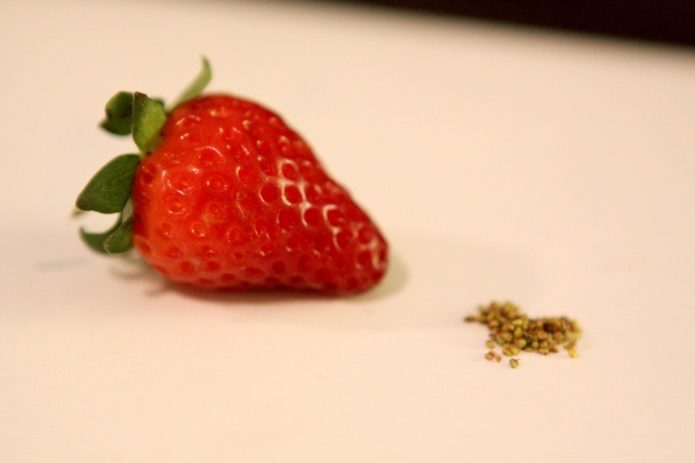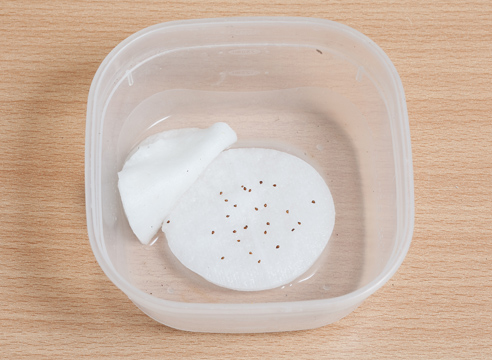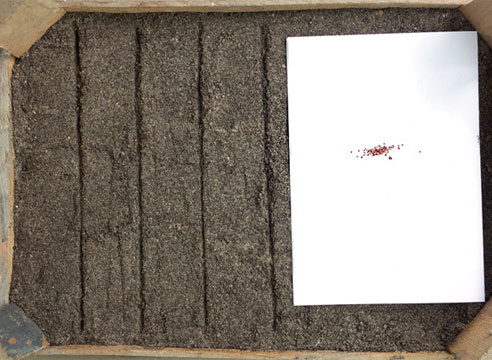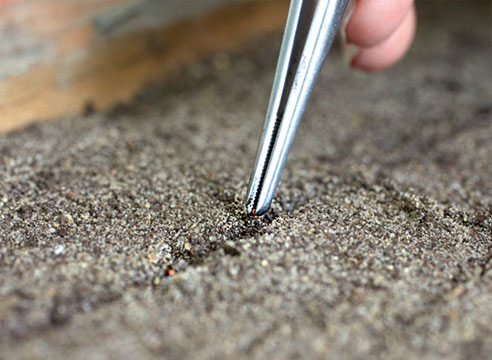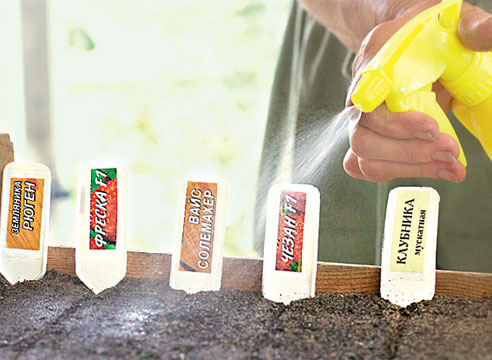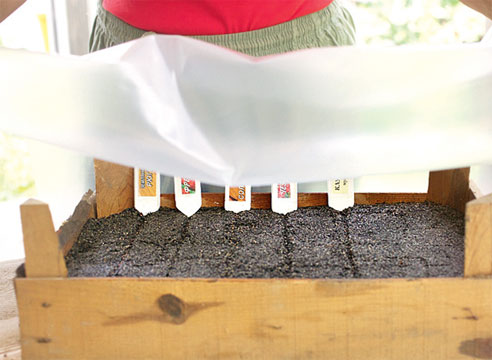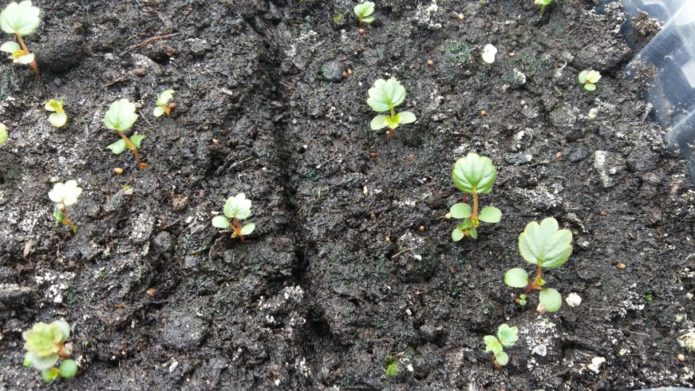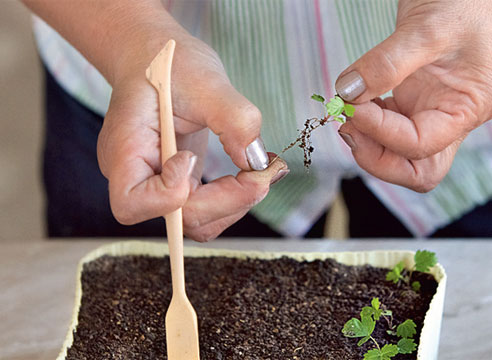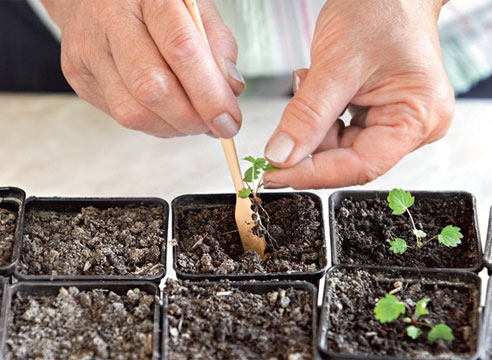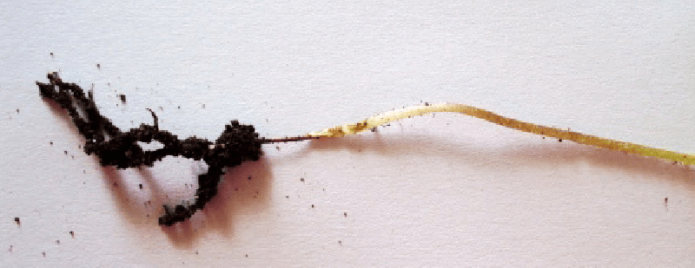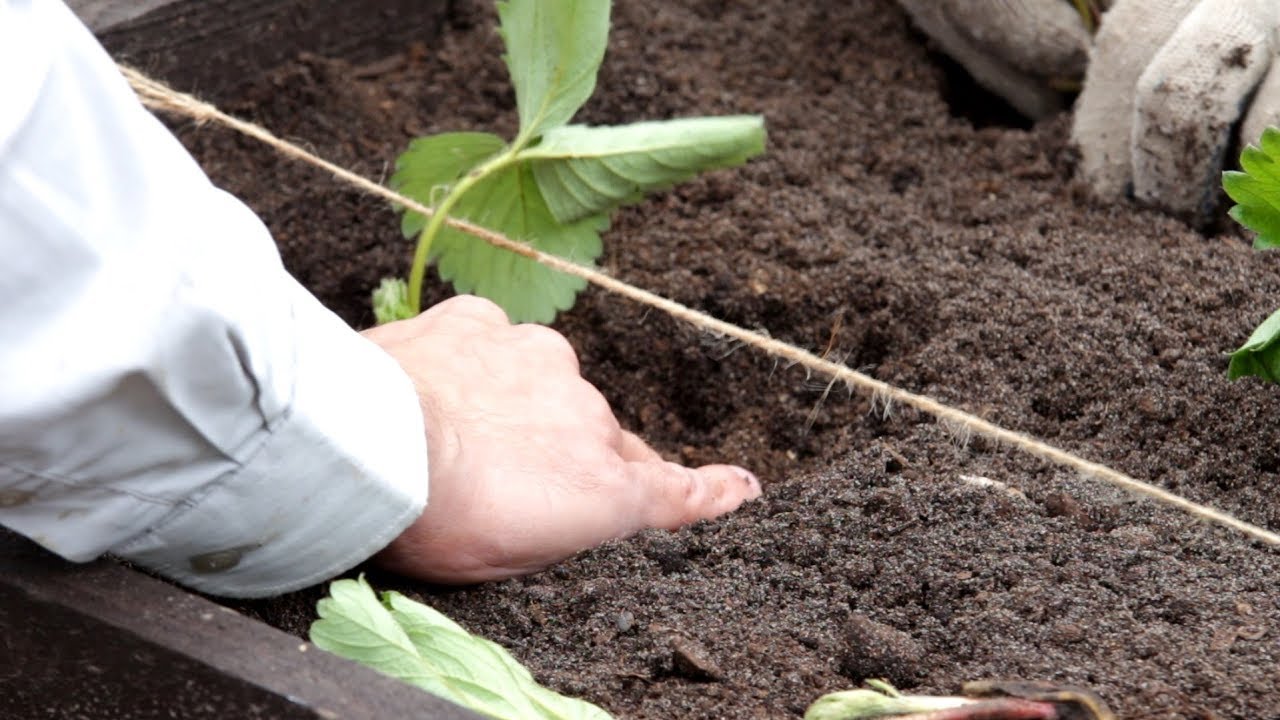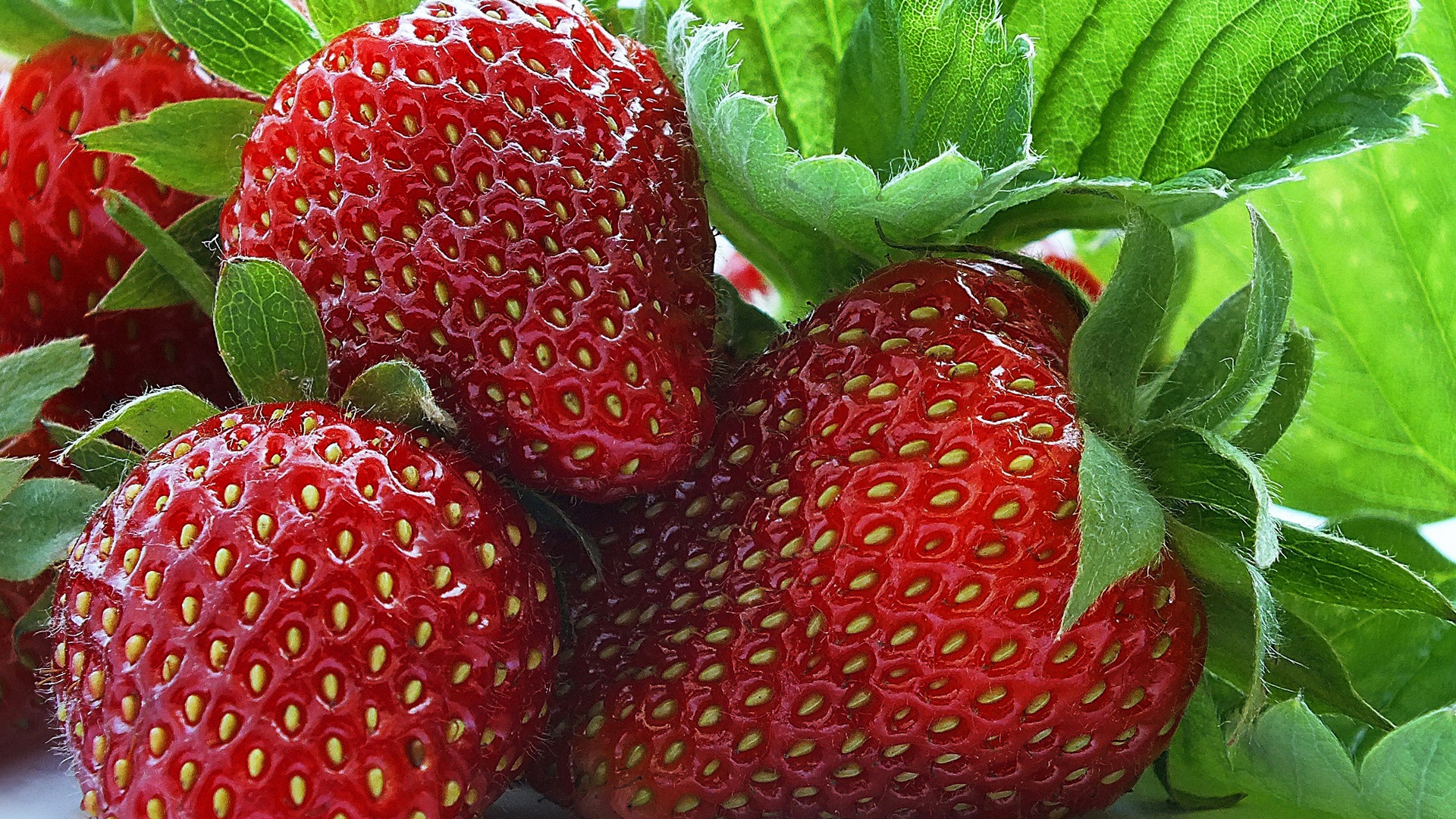It is believed that growing strawberries from seeds is a troublesome and, most often, ungrateful business: miniature seedlings are capricious, require close attention and careful care. It is customary to propagate this culture by rooting a mustache or using purchased seedlings. But there are situations when you want to start a specific variety of this berry, but trusted sellers do not have seedlings, or when you buy on the market instead of the declared species, it is not clear what grows. Buying seeds and growing seedlings from them will help to avoid such excesses. In this case, the result will be guaranteed.
Content
Benefits of growing strawberries from seeds
Growing strawberries from seeds is a feasible task even for a novice gardener, you just need to know some of the subtleties of the process. The fact that this painstaking business is worth doing is indicated by the advantages of this growing method:
- seeds are stored for a long time and are easily transported;
- young plants retain varietal characteristics;
- seedlings are not infected with viruses and fungi - and this is a guarantee of a plentiful and high-quality harvest in the future;
- This is a great way to grow garden strawberries of your favorite varieties;
- from several berries of your own harvest, you can get a large number of seeds, grow the required number of seedlings.
Sowing strawberry seeds for seedlings
Specialized stores offer a large selection of varieties and hybrids of garden strawberries, so gardening enthusiasts have a great opportunity to test new products annually and add varieties they like to their strawberry plantations. Own seeds of this berry culture can only be harvested from varietal plants. Hybrids marked F1 should not be used for seed propagation, as you can get offspring that will not correspond to the parent plants in terms of basic characteristics and quality.
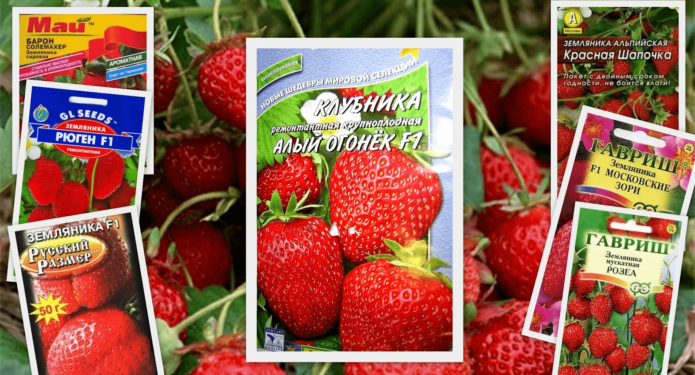
You can buy garden strawberry seeds in different ways: buy in one of the specialized stores, order online, receive by mail
Sowing dates
The best time to sow garden strawberry seeds is the end of January - beginning of March. This is because
- in winter, you can devote enough time to organizing proper care of seedlings;
- by the time of disembarkation to a permanent place, the seedlings will have time to grow and get stronger.
An earlier sowing of seeds for seedlings is also possible.In this case, you need to be ready to organize the illumination of seedlings, since natural lighting during this period will not be enough for the senes and they can get sick or die from a lack of light. Later disembarkation is also possible. But such seedlings often do not have time to acquire the necessary vitality and power for transplanting to a permanent place in the current season, so you will have to organize wintering of plants in trays or pots.
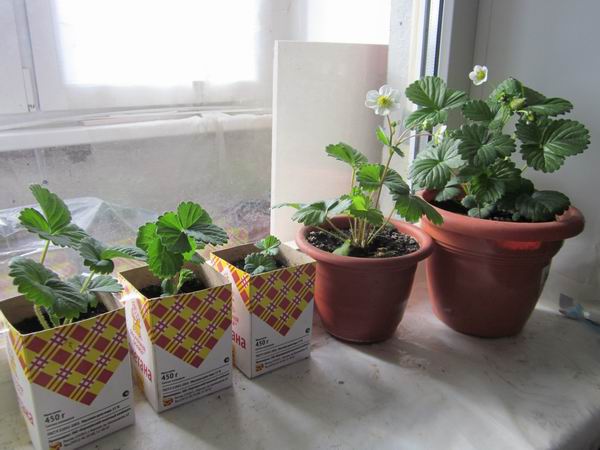
In order for strawberries left in pots to survive the winter well, it must be placed on the sunniest windows facing the south or southeast side.
Seed preparation
Seeds of garden strawberries, especially of large-fruited varieties, germinate slowly and most often unevenly. When sowing with dry seeds, the first shoots may appear in about 2 weeks, and mass germination will begin in 25-30 days. Pre-germination will not only speed up the emergence of seedlings, but also allow you to control the germination of seeds. You can organize germination as follows:
- Take two moistened cotton pads and place strawberry seeds between them.
- The discs are placed in a transparent plastic container with a lid, in which it is worth making several holes for air to enter.
- First, the container is left in a warm room, and after 2 days it is removed to the refrigerator. All this time, it is necessary to monitor the humidity of the discs, as well as periodically ventilate the container with seeds.
- After 2-3 weeks, the container is again placed in a warm and bright place, but not in direct sunlight, so that the cotton pads do not dry out quickly.
- After a short time, the seeds will begin to hatch and they can be sown in the ground.
Land preparation
Young seedlings of culture are quite vulnerable, therefore, the main requirements for the soil in which you will plant the seeds of garden strawberries are:
- ease;
- looseness;
- disinfection.
The best option for a suitable soil substrate would be the following: turf + peat + coarse sand in a ratio of 2: 1: 1. You can add a little wood ash and rotted manure to the soil mixture. For disinfection, the prepared soil is recommended to be heated in the oven for 15–20 minutes or steamed over a saucepan of boiling water for half an hour. After heat treatment, the substrate must lie down for 2-3 weeks to restore its useful properties.
Ready-made soil mixture for garden strawberries, which can be purchased at specialized retail outlets, is also suitable for sowing seeds.
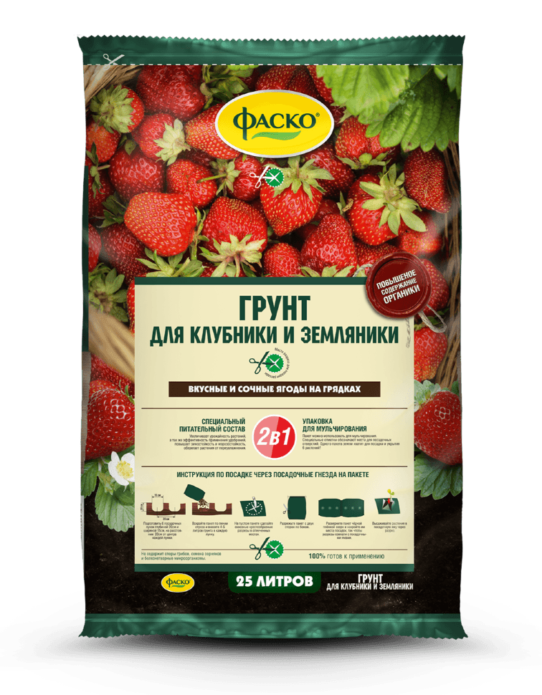
The finished soil has a sufficient nutrient content for the full development and growth of seedlings
Step-by-step instructions for sowing garden strawberry seeds
The seeds of this culture are very small, therefore, in addition to the planting container and the prepared soil mixture, it is necessary to stock up on tweezers or a sharpened wooden stick so that you can easily transfer the seeds from cotton pads to the soil. The sowing process includes the following steps:
- The prepared soil substrate is poured into a shallow tray, slightly compacted and shallow grooves are cut.
- With tweezers or a moistened wooden stick, lay out the seeds of garden strawberries in the grooves. The optimal distance between the planted seeds is 2 cm. There is no need to sprinkle the seeds with earth and deepen them, as they germinate well in the light.
- To prevent the seeds from sinking into the ground when watering, moistening is carried out using a spray bottle.
- The tray is closed with a transparent lid, glass or foil and placed in a warm room. Covering material will reduce evaporation, create a greenhouse effect, which will have a beneficial effect on the timing of emergence.
- Every day you need to ventilate the plantings and make sure that the soil is in a moderately moist state.
- Germination time (always uneven) depends on the variety and lasts 2-4 weeks after planting.
Video: sowing seeds of garden strawberries for seedlings
Care of garden strawberry seedlings
The tray with the emerging strawberry shoots is placed in a warm and bright place, but the covering material is not removed, but only raised in such a way as to provide the plants with fresh air. Partial cover will protect delicate seedlings from drying out and temperature changes. The transparent film or lid is removed only after the first real leaves appear and the plants get a little stronger. At first, a comfortable temperature is very important for them - it should be around + 20-25 degrees.
If the seeds for seedlings were planted early, then after the emergence of seedlings, artificial illumination cannot be dispensed with, since natural light at the end of winter or early spring will not be enough, and the seedlings will stretch out and turn pale. Plants can be illuminated using fluorescent or LED lamps.
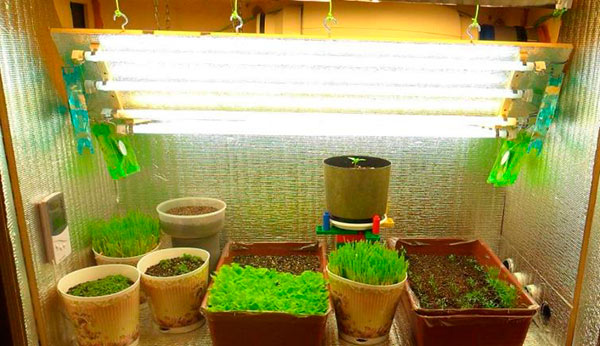
The lighting should be organized in such a way that the seedlings are provided with twelve hour daylight hours
If the trays with seedlings are placed on the windowsill, then you need to make sure that no direct sunlight falls on the sprouts. Delicate and soft leaves can get sunburn, quickly lose the necessary moisture and fade.
How to water garden strawberry seedlings
Strawberry seedlings have a weak root system. This must be taken into account when organizing watering of plants. The top layer of soil in the tray must be constantly moist. Drying it out can lead to the death of seedlings, and with waterlogging there is a risk of developing a fungus.
Many people recommend watering strawberry seedlings with a spray bottle. Such moisture is beneficial for newly sown strawberry seeds, but after the emergence of seedlings, even condensation that accumulates on the covering material can harm the green leaves. Therefore, it is better to organize drip irrigation using a disposable syringe, rubber bulb or a small teaspoon in tiny portions directly under the root of the plant.
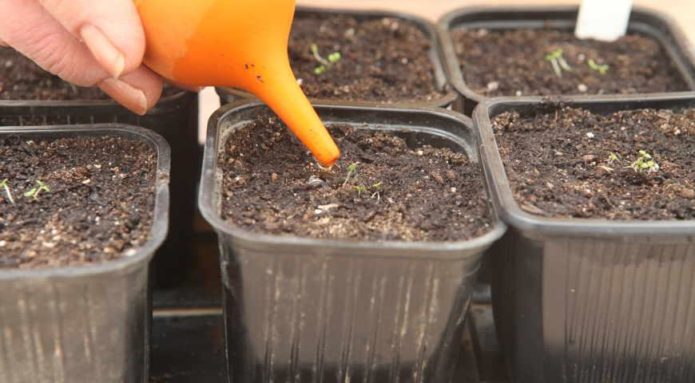
To prevent the sprouts from falling on the ground, at first they are watered from a syringe, pipette or using a syringe
For irrigation, you must use water at room temperature. It should be unboiled, settled.
Fertilizing strawberry seedlings
Strawberry seedlings that have just appeared are not fed - the plants have enough nutrition in the soil. After the appearance of the second pair of real leaves and a dive, fertilizer can be applied under the strawberry seedlings. In their capacity, it is recommended to use mixtures with a low (no more than 10%) nitrogen content and a high (about 2%) iron content. The following water-soluble dressings are ideal: Solution, Kemira Lux, Aquarin. In addition to the listed elements, they contain a sufficient amount of potassium and phosphorus.
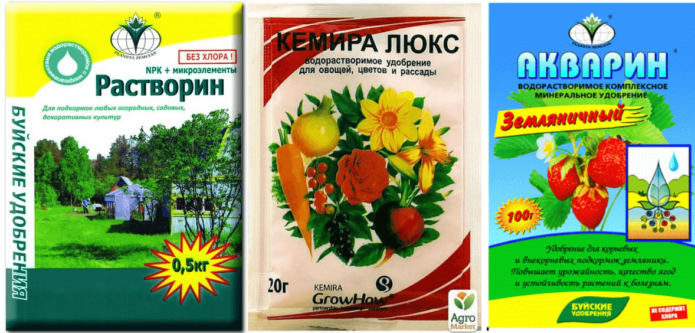
It is advisable to apply liquid mineral complex fertilizers in the first days after picking strawberry seedlings
Video: caring for strawberries before picking
Picking
A pick of strawberry seedlings is carried out after 3-4 true leaves appear on the seedlings.
If before this time the seedlings have stretched out a little and a thin root of the plant is visible, then you need to fill up the earth to the outlet, carefully distributing it around the stem with a toothpick or other suitable object. A tall stalk with a leaf can lie under its own weight, and this threatens the death of the sprout. It is recommended to use the same soil mixture as for sowing seeds.
As individual pots for picking, you can use simple plastic cups, at the bottom of which you should place a small drainage layer and make several holes to drain excess moisture. The soil mixture can be used in the same way as for sowing, but it is recommended to add about 3 g of complex mineral fertilizers for each kilogram of substrate. The step-by-step process of picking garden strawberry seedlings is as follows:
- The prepared soil is moistened and laid out in containers. A small depression is made in the center for planting.
- The seedling is removed from the common tray along with the soil. If the central root is too long, it is recommended to pinch it.
- The roots of the seedling are carefully straightened, making sure that they do not bend up, and the growth point is at the same level as before the transplant, and sprinkle with earth. When diving, it is advisable to hold the plant not by the stalk, since it is very fragile and can easily be injured.
- Water at room temperature is used for irrigation.
- Then the containers are placed in a bright and warm place. To create comfortable conditions, crops can be covered with a transparent material or a lid, which should be removed after 2-3 days.
When the ground after picking in the container settles and the seedlings of strawberries or strawberries take root, you can add a little soil, filling the plants to the point of growth. The part of the stem, covered with earth, will subsequently give roots.
Video: picking strawberry seedlings
Possible problems when growing seedlings of garden strawberries
Novice gardeners often complain that problems with growing seedlings of garden strawberries begin after the first shoots appear: they begin to fall, stretch, turn yellow. Let's together deal with the possible problems of garden strawberry seedlings and look for methods to eliminate them.
Black leg seedling
This is the colloquial name for one of the most common diseases of strawberry seedlings - rot of the root collar of seedlings. The disease is very dangerous, as it can lead not only to lodging, but also to the death of seedlings. The disease can affect seedlings from the moment the seeds germinate to the formation of a second pair of true leaves and manifests itself in the blackening and decay of the root collar of the plant. Among the reasons leading to the formation of a black leg are the following:
- poorly disinfected soil;
- waterlogging of crops;
- high humidity and air temperature;
- sudden changes in temperature;
- poor ventilation.
To combat this dangerous disease, you must first of all use preventive measures:
- seedlings need to create comfortable conditions for growth and development. With a lack of light and heat in seedlings, a decrease in immunity is observed, the risk of contracting a fungus increases;
- it is imperative to disinfect the soil by heat treatment or pickling with a solution of potassium permanganate (3 g per 10 l of water);
- pre-sowing seed treatment with Phytosporin can be carried out;
- crops covered with foil or glass must be ventilated daily, condensation must be removed from the walls.
If you find signs of the disease in your crops, then you need to do the following:
- remove the affected seedlings immediately;
- shed the remaining seedlings with Fitosporin solution (according to the instructions) or spray the plants with this solution, starting with the phase of two true leaves;
- in the absence of Fitosporin, you can use a raspberry solution of potassium permanganate for watering;
- if there are few healthy seedlings left, then urgently transplant them into other containers with disinfected soil.
Mold on seedlings
Mold itself is not as dangerous as other fungal diseases, but it weakens young seedlings, opens the door to many disease-causing infections that can lead to the death of all seedlings. The appearance of mold signals that the conditions for keeping the seedlings are unsuitable, and an urgent need to establish water, heat and air conditions. Mold can appear on the soil or even on the seedlings themselves for the following reasons:
- contamination of the land;
- settling of spores from the air;
- excessive moisture in the soil and air;
- use of non-settled water for irrigation.
The root system of adult plants secretes special substances that prevent the growth of mold, while the roots of young seedlings are not able to resist this pathogen.
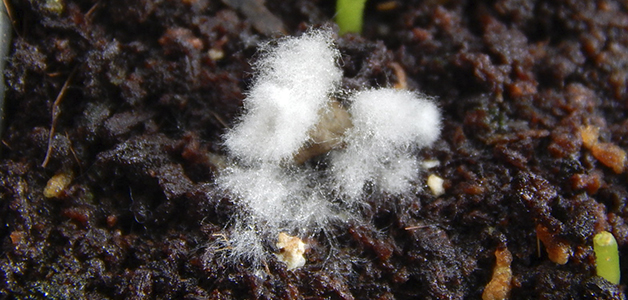
To prevent mold from appearing, you need to regularly loosen the soil surface and ventilate the crops, covered with glass or film.
Any mold seen in containers with planted seeds or strawberry seedlings should be carefully removed with a toothpick, and then sprinkle this place with wood ash, crushed activated carbon, dry sand. Thus, the focus of infection will be eliminated. Helps to get rid of mold and treatment with the following preparations:
- a weak solution of potassium permanganate;
- soda water (half a teaspoon per 1 liter of water)
- appropriate biological preparations and fungicides (Fitosporin, Oxyhom, Fundazol, etc.).
You can use Nystatin, a medicine against skin fungus. One tablet of the drug is dissolved in a glass of drinking water. The solution is used for spraying plants and soil surfaces.
Video: protecting strawberry seedlings from black leg and mold
An ancient folk remedy for protecting seedlings of many vegetable and berry crops is watering with onion peel infusion. To do this, pour onion skins (1 glass) with a liter of boiling water and insist for 2 days. Then it is diluted with water in a ratio of 1: 3 and used for irrigation. The product is well suited for the prevention of fungal diseases and rot, as well as for yellowing and lethargy of leaves.
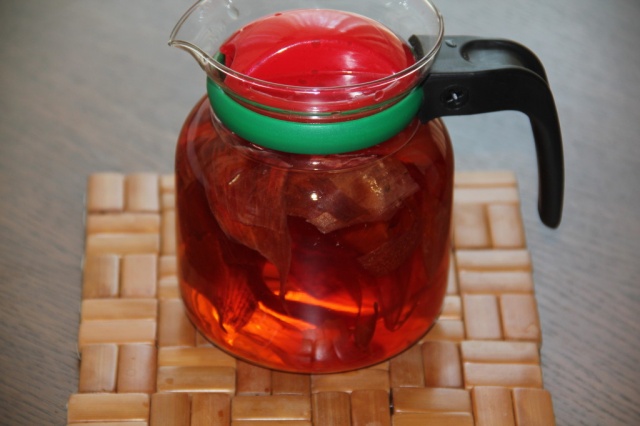
A weakly concentrated infusion of onion peels can not only be watered at the root, but also used for light spraying.
Table: possible problems with seedlings and ways to solve them
| Signs of a problem | Possible reasons | Remedies | |
| Seeds do not germinate well | Poor quality seeds | Check the expiration date of the seeds | |
| Inadequate seed preparation for sowing | Pre-sowing seed treatment, including their stratification | ||
| Unsuitable soil | Prepare soil for sowing in compliance with the above requirements | ||
| Seedlings are falling | Blackleg | Prevention and control measures are given above | |
| Lack of moisture in the air and soil |
| ||
| Excessive moisture |
| ||
| Low temperature content | Normalize temperature conditions | ||
| Seedlings stretched out | Lack of illumination |
| |
| Thickening of seedlings |
| ||
| Content temperature too high | Provide optimal temperature conditions within + 20-23 degrees | ||
| Belated dive | As soon as the seedlings begin to interfere with each other's growth, plant the seedlings in individual containers | ||
| Excess nitrogen in the soil |
| ||
| Stagnant growth | Incorrect pick, in which the roots are bent or the ground does not fill the cavities between the root filaments | Carrying out a picking in compliance with the basic rules and mandatory watering of seedlings after the procedure | |
| Leaf color change | Lack of nutrients:
| Feed the seedlings with complex mineral fertilizers, which include the necessary element | |
| Growth point dries up | Boron deficiency | Spraying with boric acid solution |
You must admit that not so much attention and effort is required in the process of growing garden strawberry seedlings from seeds. But the plants turn out to be strong, hardened, unpretentious. And they begin to bear fruit already in the first year of life.
